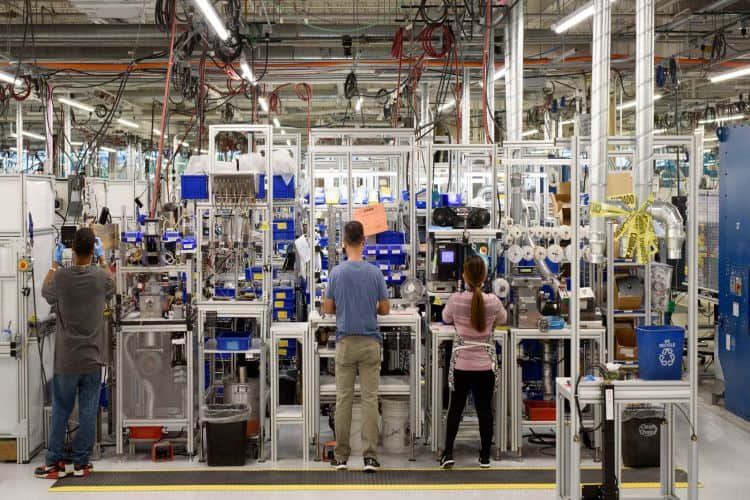 Every business that produces products has some waste, and this waste is typically overlooked. This waste can cost the business a lot of time and money if it goes unchecked. Different types of waste increase manufacturing and production costs that all businesses should be aware of. In addition, they should know the best ways to eliminate these types of waste and therefore the costs associated with them.
Every business that produces products has some waste, and this waste is typically overlooked. This waste can cost the business a lot of time and money if it goes unchecked. Different types of waste increase manufacturing and production costs that all businesses should be aware of. In addition, they should know the best ways to eliminate these types of waste and therefore the costs associated with them.
Understanding Manufacturing Waste
Waste in a production or manufacturing setting is understood to be anything that utilizes valuable resources but does not add value to the process or to the customer. This waste needs to be eliminated to not only save money but to also streamline manufacturing processes, ensure better product quality and improve delivery times to customers.
Production or manufacturing waste is classified as either pure or necessary waste. Pure waste is waste that does not add any value and that is, therefore, unnecessary. A good example is a coworker waiting for their colleague to finish using a machine or piece of equipment so they can use it.
Necessary waste also does not add value, but it is necessary. Examples include creating business reports and production planning.
Now that we know what manufacturing waste is, let’s look at the different types of waste businesses should work to eliminate.
Inventory Waste
Many businesses hold stock just in case something like production delays, supply delays, or a surge in demand happens. Excess inventory can also be due to over-ordering without checking the manufacturing needs, business needs, and customer demand. Manufacturing too many items with not enough demand or space to store them also leads to this type of waste.
The cost of this type of waste is money and space. Businesses end up with stock they cannot sell at the time, meaning their money ends up being tied up there. They also have to pay for warehousing, which they may not have needed if this waste did not exist in the first place.
Dealing with this type of waste requires that we first understand why it occurs. The most common causes include:
- Improper demand and supply forecasting
- Managers not having visibility of sales trends
- Businesses not accounting for the lead times of their suppliers
The best way to eliminate all these issues is by using inventory management software. It can help track manufacturing, sales, production, and procurement to ensure the best use of the warehousing and inventory you have.
Waiting Waste
This is the most recognizable type of waste in the manufacturing process. The waste of waiting occurs when tasks or goods are not moving. It can happen due to machines needing to be fixed or maintained, workers waiting for instructions, documents waiting for approval, goods waiting for approval, or due to slow changeover systems.
One way of dealing with these details is training and upskilling staff so they can do something else when their primary talk is on hold. The second is ensuring all components needed for repairs are ready to avoid supplier lead times when repairing machinery. Third, businesses can schedule regular maintenance to ensure as little downtime as possible.
Lastly, businesses should streamline their changeover processes. Changeover is the amount of time it takes to change a piece of equipment so that the plant stops manufacturing one product and starts producing another. Using changeover systems such as those used in the engraving businesses, businesses can reduce changeover times thus reducing the waste of waiting caused by this process.
Waste of Motion
Waste of motion has to do with the movement of machinery, resources, and people. A good example of this type of waste is when multiple people operate the same machine where a single worker could do it. This can result in a waste of time and resources as well as an increased risk of accidents and injuries.
While waste-of-motion incidents typically happen on a large scale, many of them happen on a smaller scale and can go unnoticed. For example, an employee could spend a lot of time looking for a single file in different drawers, wasting a lot of time and energy.
The first step in reducing this type of waste is assessing processes and workflows as well as premises layouts to find areas of wastage. Next, managers and leaders should create documented workflows that employees should follow.
They can also consider:
- Storing tools and equipment close to where they are needed
- Rearranging the building’s layout
- Storing heavy items at the bottom
- Using cloud storage solutions for better file management and storage
Waste of Transport
This type of waste typically occurs in inventory warehouses and manufacturing plants where materials and products are moved for good reason. Waste of transportation can also occur when goods are moved between warehouses or over long distances.
This type of waste can be costly because of the resources used to move the products or materials and due to the potential damage to materials and finished products.
Waste of transport happening inside a warehouse could mean that it has a poor layout. Businesses can start by moving items that sell fast and those that are close to shipping close to the warehouse entrance. They can also use data to find out which products are often sold together so they can keep them close.
The elimination of paper orders in favor of orders sent to mobile devices can also reduce movement. Lastly, keeping workstations and aisles free of clutter can help employees navigate the warehouse better.
Waste of Overproduction
This type of waste is closely related to inventory waste. It happens when the business produces too much of the same product. While these products might eventually be sold or used, they lead to waste in the present and immediate future. A good way of eliminating this type of waste is by using inventory software that tracks changes in demand, sales, production, and more.
Some waste is acceptable in the manufacturing process, but businesses have to keep it low to keep the costs associated with it low. Understanding the different types of manufacturing waste can make it much easier to identify them and thus reduce their impact, financial and otherwise.


